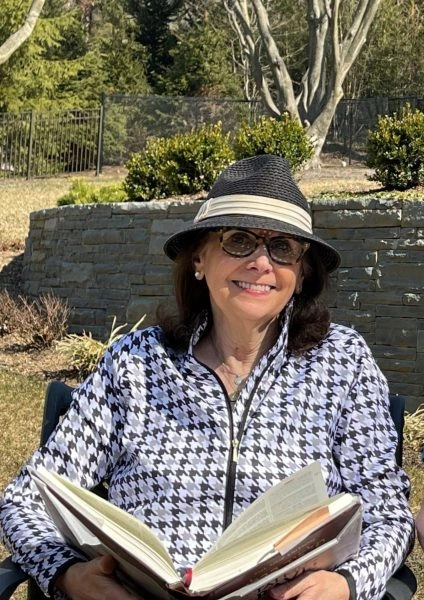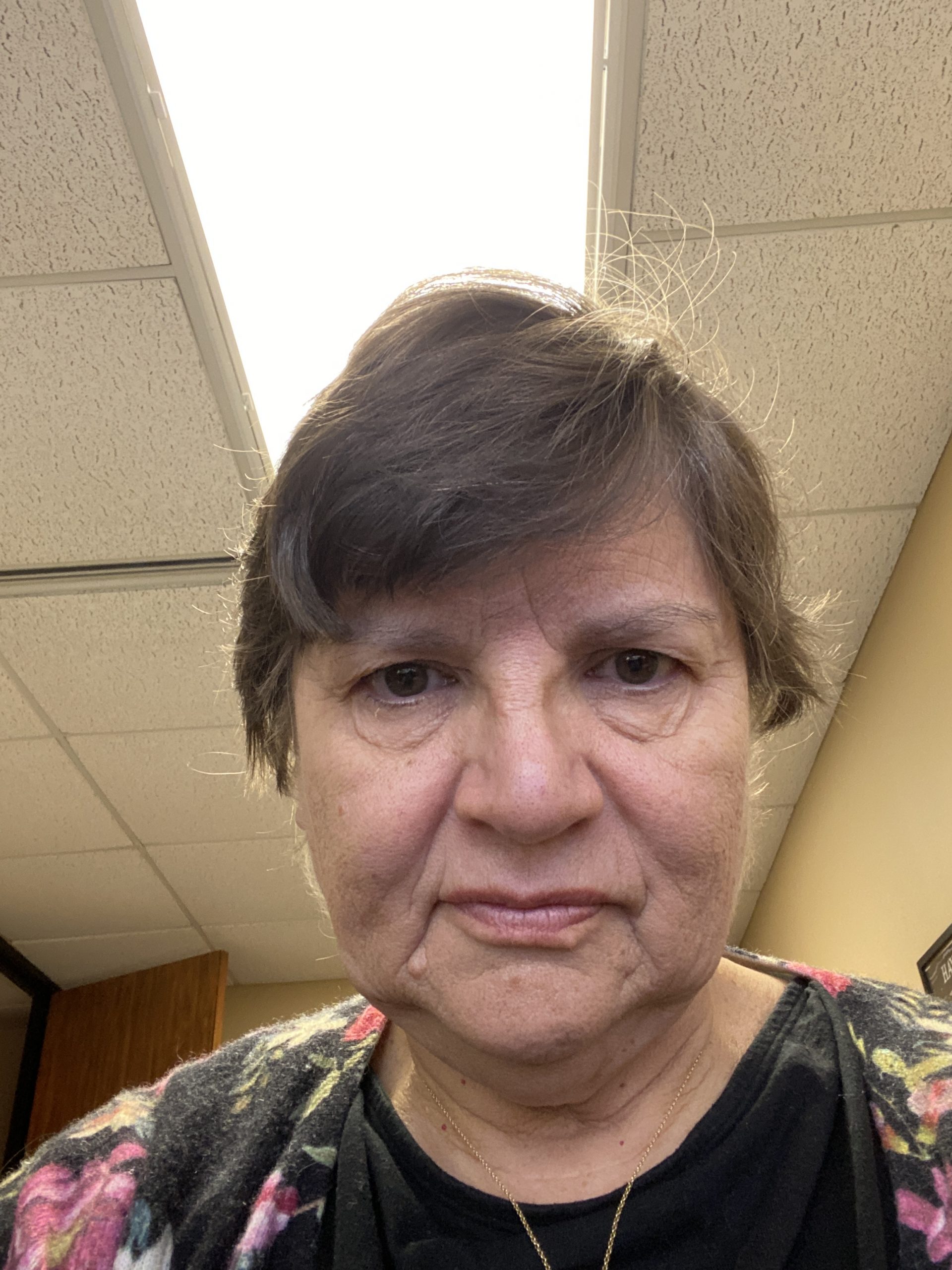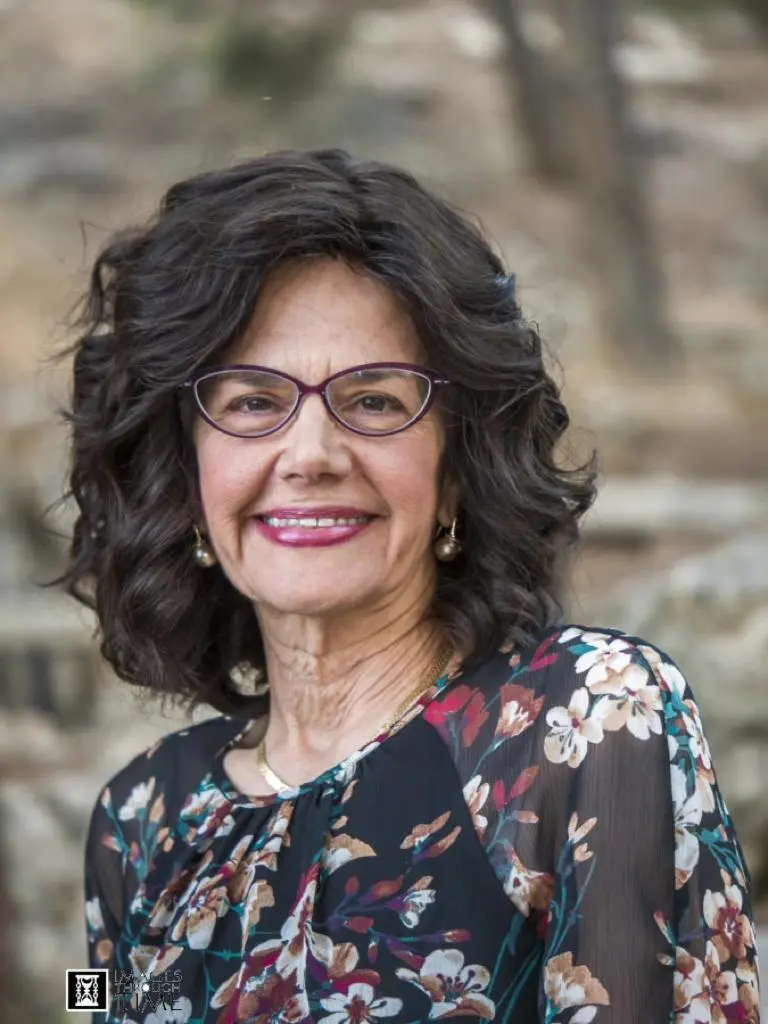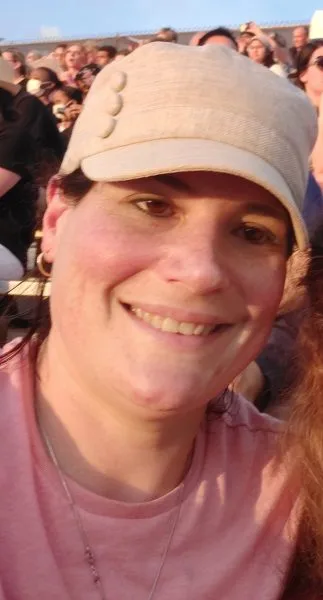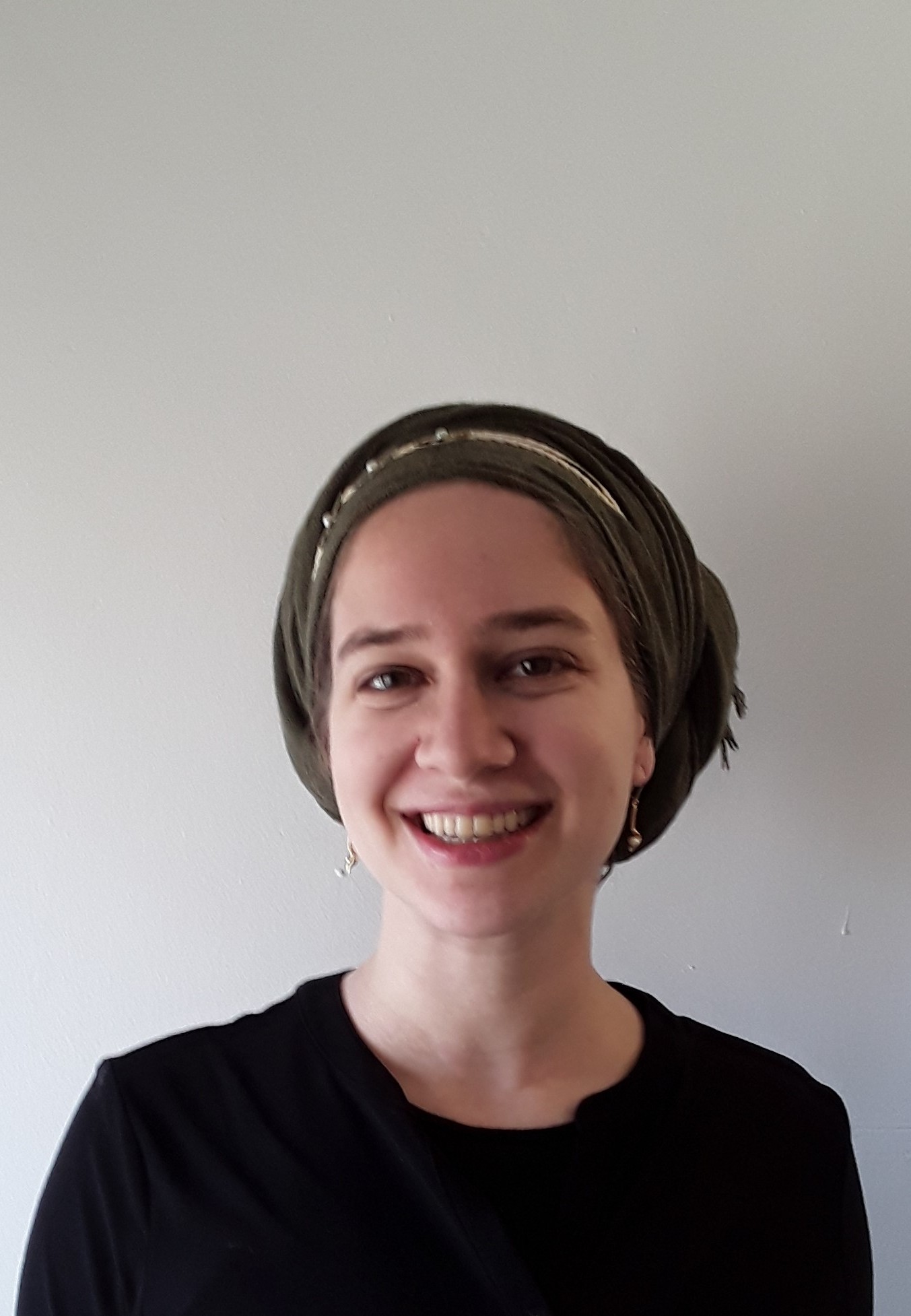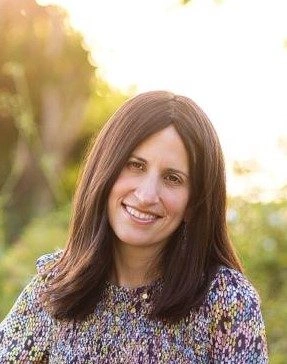Sukkah 7
וְיַעֲמִידֶנּוּ כְּנֶגֶד רֹאשׁ תּוֹר?! שְׁתֵיק רַב.
And let him position the wall measuring one handbreadth opposite the wall that emerges like the diagonal line formed by the end of the furrows as the field gradually narrows. This third partition would represent the third side of a triangle and would make the sukka appear more like a full-fledged structure, as the diagonal would represent closure of both unwalled directions. Rav was silent and did not respond.
אִיתְּמַר נָמֵי, אָמַר שְׁמוּאֵל מִשְּׁמֵיהּ דְּלֵוִי: מַעֲמִידוֹ כְּנֶגֶד הַיּוֹצֵא. וְכֵן מוֹרִין בֵּי מִדְרְשָׁא: מַעֲמִידוֹ כְּנֶגֶד הַיּוֹצֵא.
It was also stated that Shmuel said in the name of Levi: He positions it at the end of one of the standing walls opposite the wall that emerges from the other end of that wall. And similarly, they rule in the study hall: He positions it at the end of one of the standing walls opposite the wall that emerges from the other end of that wall.
רַבִּי סִימוֹן, וְאִיתֵּימָא רַבִּי יְהוֹשֻׁעַ בֶּן לֵוִי אָמַר: עוֹשֶׂה לוֹ טֶפַח שׂוֹחֵק, וּמַעֲמִידוֹ בְּפָחוֹת מִשְּׁלֹשָׁה טְפָחִים סָמוּךְ לַדּוֹפֶן, וְכׇל פָּחוֹת מִשְּׁלֹשָׁה סָמוּךְ לַדּוֹפֶן כְּלָבוּד דָּמֵי.
Rabbi Simon said, and some say it was Rabbi Yehoshua ben Levi who said, that the third wall is positioned differently. He establishes for the third side a wall that measures an expansive handbreadth, measured with the fingers spread apart, which is slightly larger than a standard handbreadth. And he then positions it less than three handbreadths from and adjacent to the wall opposite the second wall. And the legal status of any item positioned less than three handbreadths from and adjacent to the wall is like an item joined to that wall. In this way, the handbreadth-wide wall is joined to the adjacent wall, and it is as if it is a wall of four handbreadths, which is the majority of the minimum measure of the wall of a full-fledged sukka, seven handbreadths.
אָמַר רַב יְהוּדָה: סוּכָּה הָעֲשׂוּיָה כְּמָבוֹי — כְּשֵׁרָה, וְאוֹתוֹ טֶפַח מַעֲמִידוֹ לְכׇל רוּחַ שֶׁיִּרְצֶה.
Rav Yehuda said: A sukka constructed like an alleyway, with two parallel full-fledged walls, is fit, and with regard to that third wall that measures one handbreadth, he positions it adjacent to one of the walls in any direction that he chooses, as it is merely a conspicuous marker.
רַבִּי סִימוֹן, וְאִיתֵּימָא רַבִּי יְהוֹשֻׁעַ בֶּן לֵוִי אָמַר: עוֹשֶׂה לוֹ פַּס אַרְבָּעָה וּמַשֶּׁהוּ, וּמַעֲמִידוֹ בְּפָחוֹת מִשְּׁלֹשָׁה סָמוּךְ לַדּוֹפֶן, וְכׇל פָּחוֹת מִשְּׁלֹשָׁה סָמוּךְ לַדּוֹפֶן כְּלָבוּד דָּמֵי.
Rabbi Simon said, and some say it was Rabbi Yehoshua ben Levi who said: In the case of a sukka built like an alleyway open on two ends, a third wall measuring a single handbreadth is insufficient. Rather, one establishes for the third side a board with a width of four handbreadths and a bit and positions it less than three handbreadths from and adjacent to either wall, as a wall on either of the open ends. And the legal status of any item positioned less than three handbreadths from and adjacent to the wall is like an item joined to that wall. The result is a full-fledged seven-handbreadth sukka wall.
וּמַאי שְׁנָא הָתָם דְּקָאָמְרַתְּ סַגִּיא טֶפַח שׂוֹחֵק, וּמַאי שְׁנָא הָכָא דְּקָאָמְרַתְּ בָּעֲיָא פַּס אַרְבָּעָה? הָתָם דְּאִיכָּא שְׁתֵּי דְפָנוֹת כְּהִלְכָתָן — סַגִּי לֵיהּ בְּטֶפַח שׂוֹחֵק, הָכָא דְּלֵיכָּא שְׁתֵּי דְפָנוֹת, אִי אִיכָּא פַּס אַרְבָּעָה — אֵין, אִי לָא — לָא.
The Gemara asks: What is different there, in the case of two attached walls, where you say that a wall with the dimension of an expansive handbreadth suffices to complete the third wall, and what is different here where you say that it requires a board that measures four handbreadths and a bit? The Gemara answers: There, where there are two walls in the standard sense, as they are attached forming a type of structure, it is sufficient to have the third wall measure an expansive handbreadth in order to render the sukka fit; however, here, where there are not two walls in the standard sense, as they are not attached, if there is a board that measures four handbreadths as the third wall, yes, it is fit, and if not, no, it is unfit.
אָמַר רָבָא: וְאֵינָהּ נִתֶּרֶת אֶלָּא בְּצוּרַת הַפֶּתַח.
Rava said: And the sukka consisting of two adjacent walls with a third wall measuring one handbreadth is permitted and fit only if the third wall is in the form of a doorway. One can render the sukka fit only by splitting the one-handbreadth wall and attaching one half to the standing wall and one half across from the other wall that emerges from the standing wall, and then placing a pole across the two halves. By creating the form of a doorway, that third wall becomes like an open gate, which is considered a halakhic partition.
אִיכָּא דְּאָמְרִי, אָמַר רָבָא: וְנִתֶּרֶת נָמֵי בְּצוּרַת הַפֶּתַח.
Some say that Rava said: And a sukka consisting of two adjacent walls is also permitted and fit if the third wall is in the form of a doorway. In other words, Rava does not reject the remedy of the expansive-handbreadth wall suggested by Rabbi Yehoshua ben Levi; rather, he suggests an alternative.
אִיכָּא דְּאָמְרִי, אָמַר רָבָא: וּצְרִיכָא נָמֵי צוּרַת הַפֶּתַח.
Some say a third version of that which Rava said: And a sukka consisting of two adjacent walls, even with a third that is an expansive handbreadth wide as suggested by Rabbi Yehoshua ben Levi, also requires the form of a doorway to be fit. In other words, in addition to Rabbi Yehoshua ben Levi’s remedy, one must also create the form of a doorway to render the sukka fit.
רַב אָשֵׁי אַשְׁכְּחֵיהּ לְרַב כָּהֲנָא דְּקָא עָבֵיד טֶפַח שׂוֹחֵק, וְקָא עָבֵיד צוּרַת הַפֶּתַח. אֲמַר לֵיהּ: לָא סָבַר מָר לְהָא דְּרָבָא, דְּאָמַר רָבָא: וְנִתֶּרֶת נָמֵי בְּצוּרַת הַפֶּתַח? אֲמַר לֵיהּ: אֲנָא כְּאִידַּךְ לִישָּׁנָא דְּרָבָא סְבִירָא לִי. דְּאָמַר רָבָא: וּצְרִיכָא נָמֵי צוּרַת הַפֶּתַח.
The Gemara relates: Rav Ashi found Rav Kahana establishing his sukka, which had two adjacent walls, and establishing a third wall that was an expansive handbreadth wide and establishing the form of a doorway as well. Rav Ashi said to him: And does the Master not hold in accordance with that opinion of Rava, as Rava said: And the sukka is also permitted and fit if the third wall is in the form of a doorway? Why are you establishing a wall that is an expansive handbreadth wide as well? Rav Kahana said to him: I hold in accordance with the other version of the opinion of Rava, as Rava said: And the sukka also requires the form of a doorway, in addition to the expansive handbreadth, to be fit.
שְׁתַּיִם כְּהִלְכָתָן כּוּ׳. אָמַר רָבָא: וְכֵן לְשַׁבָּת, מִגּוֹ דְּהָוְיָא דּוֹפֶן לְעִנְיַן סוּכָּה — הָוְיָא דּוֹפֶן לְעִנְיַן שַׁבָּת.
§ It is taught in the Tosefta that if the sukka has two walls in the standard sense and a third wall that measures one handbreadth, it is fit. Rava said: And likewise with regard to Shabbat that occurs during the festival of Sukkot, since it is considered a wall with regard to the halakhot of sukka it is considered a partition with regard to the halakhot of Shabbat. Were one to construct a sukka in that manner in a public domain adjacent to the entrance to his house, its legal status would be that of a private domain and one would be permitted to move objects from it to his house and vice versa on Shabbat that occurs during the Festival. However, that structure is not considered a private domain on any other Shabbat.
אֵיתִיבֵיהּ אַבָּיֵי: וּמִי אָמְרִינַן מִגּוֹ? וְהָתַנְיָא: דּוֹפֶן סוּכָּה כְּדוֹפֶן שַׁבָּת, וּבִלְבַד שֶׁלֹּא יְהֵא בֵּין קָנֶה לַחֲבֵרוֹ שְׁלֹשָׁה טְפָחִים.
Abaye raised an objection to Rava’s opinion from a baraita: And do we say that this principle: Since it is considered, etc., applies in this area of halakha? But isn’t it taught in a baraita: The specifications of the wall of a sukka are like those of a partition with regard to the halakhot of Shabbat. Just as with regard to the halakhot of Shabbat, one forms a partition by establishing adjacent reeds, so too, one forms the wall of a sukka in the same manner, provided that the gap from one reed to another will not be as much as three handbreadths. If the gap is three handbreadths or greater, the legal status of the reeds is that they are not considered joined.
וִיתֵירָה, שַׁבָּת עַל סוּכָּה, שֶׁהַשַּׁבָּת אֵינָהּ נִתֶּרֶת אֶלָּא בְּעוֹמֵד מְרוּבֶּה עַל הַפָּרוּץ, מַה שֶּׁאֵין כֵּן בְּסוּכָּה.
But the stringency of the halakha with regard to Shabbat goes beyond the stringency of the halakha with regard to sukka, in terms of the criteria for effective partitions, as with regard to Shabbat, carrying is permitted only in a case where the total of the standing segments of the partition, the actual wall, is greater than the total of the breached segments of the partition, the gaps that are less than three handbreadths. That is not so with regard to the sukka, where, even if the breached segments total more than the standing segments, e.g., a sukka consisting of two walls in which there are gaps and a third wall measuring only a single handbreadth, it is still fit.
מַאי לָאו: יְתֵירָה שַׁבָּת דְּסוּכָּה אַסּוּכָּה, וְלָא אָמְרִינַן מִגּוֹ!
The Gemara analyzes the baraita. What, isn’t the baraita teaching that the stringency with regard to Shabbat that occurs during the festival of Sukkot goes beyond the stringency with regard to the rest of the festival of Sukkot? And apparently, we do not say the principle: Since it is considered a fit partition for sukka let it also be considered a fit partition for Shabbat. This is difficult according to Rava, in whose opinion that principle is applied in this case.
לָא: יְתֵירָה שַׁבָּת דְּעָלְמָא עַל שַׁבָּת דְּסוּכָּה.
Rava rejects that interpretation of the baraita. No, the baraita is teaching that the stringency with regard to Shabbat in general goes beyond the stringency with regard to Shabbat that occurs during the festival of Sukkot. On Shabbat during the festival of Sukkot, a partition where the total of the breached segments of the partition is greater than the total of the standing segments is effective, as, since it is effective as a wall in a sukka, it is effective as a partition for Shabbat as well. That is not the case on Shabbat during the rest of the year, when a partition of that sort is ineffective on Shabbat.
אִי הָכִי, לִיתְנֵי נָמֵי: יְתֵירָה סוּכָּה דְעָלְמָא אַסּוּכָּה דְשַׁבָּת, דְּאִילּוּ סוּכָּה דְעָלְמָא בָּעֲיָא טֶפַח שׂוֹחֵק, וְאִילּוּ סוּכָּה דְשַׁבָּת לָא בָּעֲיָא טֶפַח שׂוֹחֵק, וְסַגִּי בְּלֶחִי.
Abaye asked: If it is so that the distinction in the baraita is not a fundamental distinction between the halakhot of sukka and the halakhot of Shabbat, but is instead a distinction between the halakhot of Shabbat in general and the specific case of Shabbat during the festival of Sukkot, then let the baraita also teach a novel distinction involving Shabbat that occurs during the festival of Sukkot. The stringency with regard to sukka in general during the rest of Sukkot goes beyond the stringency with regard to sukka on Shabbat that occurs during the festival of Sukkot, as a sukka in general consisting of two parallel walls, like an alleyway, requires that its third wall measure an expansive handbreadth, while a sukka on Shabbat does not require an expansive handbreadth for this purpose, and it is sufficient for the third wall to be established with a side post ten handbreadths high and any width.
דְּהָא אַתְּ הוּא דְּאָמְרַתְּ: סִיכֵּךְ עַל גַּבֵּי מָבוֹי שֶׁיֵּשׁ לוֹ לֶחִי — כָּשֵׁר!
Since the side post is effective as a partition with regard to the halakhot of Shabbat, it should also be effective as a wall with regard to the halakhot of sukka although it is less than one handbreadth wide, as you are the one who said: If one placed roofing over an alleyway which has a side post on one of the open ends to permit carrying in that alleyway on Shabbat, it is fit as a sukka for that same Shabbat, although it would not be fit during the rest of the week of the Festival.
הָהוּא לָא אִצְטְרִיכָא לֵיהּ, הַשְׁתָּא מִקִּילְּתָא לַחֲמִירְתָּא אָמְרִינַן, מֵחֲמִירְתָּא לְקִילְּתָא לֹא כׇּל שֶׁכֵּן.
Rava replied to him: That is indeed my statement; however, the fact is that the baraita does not cite that distinction, because it is not necessary to state that there are circumstances in which the general halakhot of sukka are stricter than its halakhot on Shabbat, as there is no novelty in the concept that the halakhot of partitions on Shabbat should apply to a sukka. Now that we say that halakhot may be derived from a leniency to a stringency, as a halakha that applies to sukka, which is a positive mitzva, is applied to the halakhot of Shabbat, which is a stringent prohibition punishable by karet; then from a stringency, the halakhot of Shabbat, to a leniency, all the more so may halakhot be derived. Therefore, there is no reason for the baraita to mention that distinction explicitly.
גּוּפָא. אָמַר רָבָא:
§ Apropos roofing over an alleyway, the Gemara elaborates about the matter itself. Rava said:
סִיכֵּךְ עַל גַּבֵּי מָבוֹי שֶׁיֵּשׁ לוֹ לֶחִי — כְּשֵׁרָה.
If one placed roofing over an alleyway that has a side post, it is fit for use as a sukka.
וְאָמַר רָבָא: סִיכֵּךְ עַל גַּבֵּי פַּסֵּי בֵירָאוֹת — כְּשֵׁרָה.
And similarly, Rava said: If one placed roofing over upright boards surrounding wells, it is fit for use as a sukka. A well is usually at least four handbreadths wide and ten handbreadths deep. Therefore, it is considered a private domain, and it is prohibited to draw water from it on Shabbat, as that would constitute a violation of the prohibition to carry from a private domain into a public one. In order to permit drawing water from the well, the surrounding area must be partitioned off and rendered a private domain. For the benefit of Festival pilgrims, the Sages instituted a special leniency that full-fledged partitions need not be constructed around the well for this purpose. Rather, it is sufficient if there are four double posts at the four corners of the area surrounding the well. Since these symbolic barriers are considered partitions for the halakhot of Shabbat, they are considered partitions for the halakhot of sukka on Shabbat as well.
וּצְרִיכָא. דְּאִי אַשְׁמְעִינַן מָבוֹי, מִשּׁוּם דְּאִיכָּא שְׁתֵּי דְפָנוֹת מְעַלְּיָיתָא. אֲבָל גַּבֵּי פַּסֵּי בֵירָאוֹת, דְּלֵיכָּא שְׁתֵּי דְפָנוֹת מְעַלְּיָיתָא — אֵימָא לָא.
The Gemara notes: And it is necessary for Rava to state the halakha in each of the two similar cases, as if he had taught us only that the sukka is fit in the case of the alleyway, one could say that it is due to the fact that there are two full-fledged walls; however, in the case of upright boards surrounding wells, where there are not two full-fledged walls and most of the area is breached, say no, it is not considered a fit sukka.
וְאִי אַשְׁמְעִינַן פַּסֵּי בֵירָאוֹת, מִשּׁוּם דְּאִיכָּא שֵׁם אַרְבַּע דְפָנוֹת, אֲבָל סִיכֵּךְ עַל גַּבֵּי מָבוֹי, דְּלֵיכָּא שֵׁם אַרְבַּע דְפָנוֹת — אֵימָא לָא.
And if he had taught us only the case of upright boards surrounding wells, one could say that it is due to the fact that in that case it is in the category of a sukka with four, albeit virtual, walls; however, in the case where one placed roofing over an alleyway, where it is not in the category of a sukka with four walls, say no, it is not considered a fit sukka.
וְאִי אַשְׁמְעִינַן הָנֵי תַּרְתֵּי, מֵחֲמִירְתָּא לְקִילְּתָא, אֲבָל מִקִּילְּתָא לַחֲמִירְתָּא — אֵימָא לָא, צְרִיכָא.
And if he had taught us only these two cases, to teach that a partition with regard to the halakhot of Shabbat is a partition with regard to the halakhot of sukka, one could say that it is due to the fact that one can derive a halakha from a stringency, the halakhot of Shabbat, to a leniency, the halakhot of sukka; however, to derive a halakha from a leniency to a stringency, say no. Therefore, it is necessary to teach the third halakha with regard to a sukka consisting of two walls in the standard sense and a third wall measuring a handbreadth: Since the third wall is considered a wall with regard to the halakhot of sukka, a leniency, it is considered a wall with regard to the halakhot of Shabbat, a stringency.
וְשֶׁחֲמָתָהּ מְרוּבָּה מְצִלָּתָהּ — פְּסוּלָה.
§ The mishna continues: And a sukka whose sunlight, i.e., the sunlight that passes through the roofing, is greater than its shade, is unfit.
תָּנוּ רַבָּנַן: חֲמָתָהּ מֵחֲמַת סִיכּוּךְ, וְלֹא מֵחֲמַת דְּפָנוֹת. רַבִּי יֹאשִׁיָּה אוֹמֵר: אַף מֵחֲמַת דְּפָנוֹת.
The Sages taught in a baraita that in the statement: Whose sunlight is greater than its shade, the reference is to sunlight that passes through due to sparse roofing, and not to the sunlight entering due to gaps in the walls. It is possible for a sukka to have more sunlight than shade due to sunlight passing through the sides and not the roofing, in which case the sukka is fit. Rabbi Yoshiya says: If the sunlight exceeds the shade the sukka is unfit, even if the sunlight is due to gaps in the walls.
אָמַר רַב יֵימַר בַּר שֶׁלֶמְיָה מִשְּׁמֵיהּ דְּאַבָּיֵי: מַאי טַעְמֵיהּ דְּרַבִּי יֹאשִׁיָּה, דִּכְתִיב: ״וְסַכּוֹתָ עַל הָאָרוֹן אֶת הַפָּרוֹכֶת״, פָּרוֹכֶת מְחִיצָה, וְקָא קַרְיֵיהּ רַחֲמָנָא ״סְכָכָה״, אַלְמָא מְחִיצָה כִּסְכָךְ בָּעֵינַן.
Rav Yeimar bar Shelemya said in the name of Abaye: What is the rationale for the statement of Rabbi Yoshiya? It is as it is written: “And you shall screen [vesakkota] the Ark with the curtain” (Exodus 40:3). The curtain is a partition and not a covering over the Ark, and nevertheless, the Merciful One calls it roofing [sekhakha]. Apparently, we require the purpose of a partition to be similar to the purpose of roofing; just as the roofing must be mostly impermeable by sunlight, so must the partition.
וְרַבָּנַן? הַהוּא דְּנִיכּוֹף בַּיהּ פּוּרְתָּא, דְּמִחֲזֵי כִּסְכָךְ.
And how do the Rabbis, who disagree with Rabbi Yoshiya, interpret the term: And you shall screen [vesakkota]? That term teaches that we should bend the top of the curtain a bit so that it appears as roofing over the Ark.
אָמַר אַבָּיֵי: רַבִּי, וְרַבִּי יֹאשִׁיָּה, וְרַבִּי יְהוּדָה, וְרַבִּי שִׁמְעוֹן, וְרַבָּן גַּמְלִיאֵל, וּבֵית שַׁמַּאי, וְרַבִּי אֱלִיעֶזֶר, וַאֲחֵרִים — כּוּלְּהוּ סְבִירָא לְהוּ: סוּכָּה דִּירַת קֶבַע בָּעֵינַן.
Abaye said: Rabbi Yehuda HaNasi, and Rabbi Yoshiya, and Rabbi Yehuda, and Rabbi Shimon, and Rabban Gamliel, and Beit Shammai, and Rabbi Eliezer, and Aḥerim all hold that we require the sukka to be sturdy and fit for dwelling like a permanent residence.
רַבִּי — דְּתַנְיָא, רַבִּי אוֹמֵר: כׇּל סוּכָּה שֶׁאֵין בָּהּ אַרְבַּע אַמּוֹת עַל אַרְבַּע אַמּוֹת — פְּסוּלָה.
Abaye cites the relevant statements of the tanna’im listed above. Rabbi Yehuda HaNasi states this opinion, as it is taught in a baraita that Rabbi Yehuda HaNasi says: Any sukka that does not have an area of four cubits by four cubits is unfit. These are the dimensions of a permanent residence.
רַבִּי יֹאשִׁיָּה — הָא דַּאֲמַרַן.
The fact that Rabbi Yoshiya holds that a sukka must be a permanent residence can be seen from that which we stated, that the walls must also be impermeable by sunlight like the walls of a permanent residence.
רַבִּי יְהוּדָה דִּתְנַן סוּכָּה שֶׁהִיא גְּבוֹהָה לְמַעְלָה מֵעֶשְׂרִים אַמָּה פְּסוּלָה רַבִּי יְהוּדָה מַכְשִׁיר
Rabbi Yehuda also holds that a sukka must be a permanent residence, as we learned in the mishna: A sukka that is more than twenty cubits high is unfit; Rabbi Yehuda deems it fit. As explained above, in constructing a sukka more than twenty cubits high, one cannot render his residence a temporary residence; rather, he must construct a sturdy permanent residence.
וְרַבִּי שִׁמְעוֹן — דְּתַנְיָא: שְׁתַּיִם כְּהִלְכָתָן וּשְׁלִישִׁית אֲפִילּוּ טֶפַח, רַבִּי שִׁמְעוֹן אוֹמֵר: שָׁלֹשׁ כְּהִלְכָתָן וּרְבִיעִית אֲפִילּוּ טֶפַח.
Rabbi Shimon agrees, as it is taught in a baraita: The dimensions of a sukka are two walls in the standard sense, and a third wall that measures even a handbreadth; Rabbi Shimon says: Three of the walls must be walls in the standard sense, and a fourth wall is required that measures even a handbreadth. Apparently, a sukka must be surrounded on four sides like a permanent residence.
רַבָּן גַּמְלִיאֵל — דְּתַנְיָא: הָעוֹשֶׂה סוּכָּתוֹ בְּרֹאשׁ הָעֲגָלָה אוֹ בְּרֹאשׁ הַסְּפִינָה, רַבָּן גַּמְלִיאֵל פּוֹסֵל, וְרַבִּי עֲקִיבָא מַכְשִׁיר.
Rabban Gamliel holds that a sukka must be a permanent residence, as it is taught in a baraita: In the case of one who establishes his sukka atop a wagon or atop a boat, Rabban Gamliel deems it unfit; a mobile structure is not a permanent residence. Rabbi Akiva deems it fit. Apparently, Rabban Gamliel requires that a sukka be a permanent residence.
בֵּית שַׁמַּאי — דִּתְנַן: מִי שֶׁהָיָה רֹאשׁוֹ וְרוּבּוֹ בַּסּוּכָּה וְשׁוּלְחָנוֹ בְּתוֹךְ הַבַּיִת, בֵּית שַׁמַּאי פּוֹסְלִין, וּבֵית הִלֵּל מַכְשִׁירִין.
Beit Shammai agree, as we learned in a mishna: In the case of one whose head and most of his body were in the sukka and his table was in the house, Beit Shammai deem the sukka unfit, since a small sukka is unfit for use and one cannot fulfill the mitzva of sukka with it. And Beit Hillel deem it fit. Apparently, Beit Shammai require that the sukka be similar to a permanent structure.
רַבִּי אֱלִיעֶזֶר — דִּתְנַן: הָעוֹשֶׂה סוּכָּתוֹ כְּמִין צְרִיף, אוֹ שֶׁסְּמָכָהּ לְכוֹתֶל, רַבִּי אֱלִיעֶזֶר פּוֹסֵל לְפִי שֶׁאֵין לָהּ גַּג, וַחֲכָמִים מַכְשִׁירִין.
Rabbi Eliezer holds that a sukka must be a permanent residence, as we learned in a mishna: In the case of one who establishes his sukka like a type of circular hut whose walls slope down from the center and has no roof, or one who rested the sukka against the wall, taking long branches and placing one end on the ground and leaning the other end against the wall, establishing a structure with no roof, Rabbi Eliezer deems it unfit because it does not have a roof, and the Rabbis deem it fit. A permanent residence has a roof.
אֲחֵרִים — דְּתַנְיָא, אֲחֵרִים אוֹמְרִים: סוּכָּה הָעֲשׂוּיָה כְּשׁוֹבָךְ — פְּסוּלָה, לְפִי שֶׁאֵין לָהּ זָוִיּוֹת.
Aḥerim agree, as it is taught in a baraita that Aḥerim say: A sukka built in a circular shape like a dovecote is unfit, because it does not have corners, and a permanent residence is one with corners.
אָמַר רַבִּי יוֹחָנָן: סוּכָּה הָעֲשׂוּיָה כְּכִבְשָׁן, אִם יֵשׁ בְּהֶקֵּיפָהּ כְּדֵי לֵישֵׁב בָּהּ עֶשְׂרִים וְאַרְבָּעָה בְּנֵי אָדָם — כְּשֵׁרָה, וְאִם לָאו — פְּסוּלָה.
§ Rabbi Yoḥanan said: With regard to a sukka that is shaped like a furnace and is completely round, if its circumference has sufficient space for twenty-four people to sit in it, it is fit, and if not, it is unfit.
כְּמַאן — כְּרַבִּי, דְּאָמַר: כׇּל סוּכָּה שֶׁאֵין בָּהּ אַרְבַּע אַמּוֹת עַל אַרְבַּע אַמּוֹת פְּסוּלָה.
The Gemara asks: In accordance with whose opinion did Rabbi Yoḥanan rule that the sukka must be so expansive? The Gemara answers: It is undoubtedly in accordance with the opinion of Rabbi Yehuda HaNasi, who said: Any sukka that does not have an area of four cubits by four cubits is unfit. Since he requires the sukka with the largest minimum dimensions, Rabbi Yoḥanan must hold in accordance with his opinion.
מִכְּדִי, גַּבְרָא בְּאַמְּתָא יָתֵיב, כֹּל שֶׁיֵּשׁ בְּהֶקֵּיפוֹ שְׁלֹשָׁה טְפָחִים יֵשׁ בּוֹ רוֹחַב טֶפַח, בִּתְרֵיסַר סַגִּי?
However, even if he holds in accordance with the opinion of Rabbi Yehuda HaNasi, the question arises: Now, since when a person sits, he occupies one cubit of space, the circumference required by Rabbi Yoḥanan for the sukka is twenty-four cubits. However, mathematically, for every three handbreadths circumference in a circle, there is a diameter of approximately one handbreadth. Consequently, rather than requiring a sukka that holds twenty-four people, a sukka that holds merely twelve people should suffice, since a sukka with a circumference of twelve cubits has a diameter of approximately four. In that case, why does Rabbi Yoḥanan require the sukka to have double the necessary circumference?





